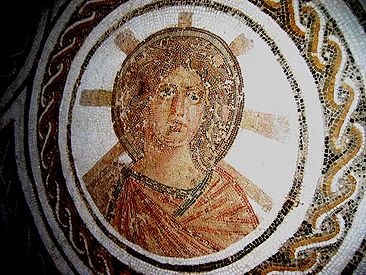
 |
Freethought & Rationalism ArchiveThe archives are read only. |
|
|
#21 | |||
|
Contributor
Join Date: Mar 2006
Location: Falls Creek, Oz.
Posts: 11,192
|
Quote:
Quote:
"This enormous favor was an open invitation to false pretence:The political influence in the mosaic by far exceeds any religious influence IMO. Quote:
|
|||
|
|
|
|
#22 |
|
Contributor
Join Date: Mar 2006
Location: Falls Creek, Oz.
Posts: 11,192
|
That's what and who Jesus was asserted to be by the author(s) of the books of the New Testament Canon and by the suspiciously dishonest "Church Historian" Eusebius furiously researching and writing three centuries after the "alleged miraculous and divine events". Tolkien made plenty of assertions about the nation of hobbits, but that does not make hobbits historical figures. I reject the notion that we have evidence of any "Historical Jesus".
|
|
|
|
|
#23 | |
|
Veteran Member
Join Date: Jul 2008
Location: Location: eastern North America
Posts: 1,468
|
Quote:
Yeah, I was careless. I should have been more careful. avi |
|
|
|
|
|
#24 | |
|
Contributor
Join Date: Mar 2004
Location: Dallas, TX
Posts: 11,525
|
Quote:
Tel Megiddo mosaic, dated to late 3rd/early 4th century: 
|
|
|
|
|
|
#25 |
|
Veteran Member
Join Date: May 2007
Location: Arizona
Posts: 1,808
|
Then again, perhaps the artist simply chose to show what looks like a dolphin and another fish and it has nothing whatsoever to do with religion. Megiddo is pretty close to the sea.
To paraphrase Freud....'sometimes a fish is just a fish.' |
|
|
|
|
#26 | ||||
|
Veteran Member
Join Date: Sep 2004
Location: Birmingham UK
Posts: 4,876
|
Quote:
Quote:
In its context (described above) I think the figure has to be symbolic of something. This is not IMO realistic portraiture. However in the absence of some written explanation I am not sure how I can convince you that it is not just a portrait. I will say that the fact that the figure is that of a European aristocrat not a Jewish peasant is not evidence that it was not intended to be Jesus. Christian images of Jesus in the early Christian empire did not depict him as a Jew. Andrew Criddle |
||||
|
|
|
|
#27 | ||
|
Contributor
Join Date: Mar 2006
Location: Falls Creek, Oz.
Posts: 11,192
|
Quote:
The Good Shepherd is not carry a lost sheep, but an animal with horns. Readers should please feel free to point at some secure and unambiguous image of the "early christian jesus", but I dont think anyone is going to find anything at all .... Jesus Christ as the "Sun God" does not fit the jigsaw puzzle of ancient history in the way the christians would like it to. Helios being interpretted as Christ ante pacem  Quote:
|
||
|
|
|
|
#28 | ||||
|
Veteran Member
Join Date: Jul 2008
Location: Location: eastern North America
Posts: 1,468
|
Quote:
I do not understand your suggestion that "the figure has to be symbolic of something." Why? Why must the figure, and here, I suppose you refer to the image of Constantine, (not the four male figures with windswept hair, nor the hero Bellerophon mounted on his winged horse, Pegasus,) be symbolic, rather than decorative? Perhaps the problem is my ignorance of both art and history. Are there no known examples of two thousand year old mosaics which represent people or ideas in a straightforward, non-symbolic fashion? Does every ancient Roman/Greek mosaic always embed symbolism within it? Quote:
Quote:
Quote:
Whether one believes, as I do, that Jesus was a mythical invention, or contrarily, that he was a genuine historical figure, either way, he is regarded, according to tradition and the gospels, as being of patrician lineage, not a peasant of immodest financial means. He had been given an excellent education, according to the gospels, a characteristic of family wealth. So, I don't expect an image of him to look like a guy in rags, ... avi |
||||
|
|
|
|
#29 | |
|
Veteran Member
Join Date: Jul 2008
Location: Location: eastern North America
Posts: 1,468
|
Quote:
By contrast, we have lots of evidence of christian activities, including documents, monuments, coins, mosaics, murals, and so on, AFTER Constantine. Is it possible, that the rationale for depicting the son of David as Roman Emperor, rather than as itinerant Palestinian rabbi, is based upon Constantine's declaration that henceforth, Christianity should be the official state religion? avi |
|
|
|
|
|
#30 | ||||
|
Veteran Member
Join Date: Sep 2004
Location: Birmingham UK
Posts: 4,876
|
Quote:
As I said before, I doubt if I'll be able to convince you, but I'jj try and explain better what I meant. When I come across a portrait in the presence of Bellerophon pomegrantes a great tree figures with windswept hair etc I read the whole thing as symbolic. I did not mean to suggest that the mosaic figure is not highly skilled work, it obviously is. Even if it is a picture of the Emperor it is a symbolic representation of the Emperor not an attempt at a photograph. (Again this is in no way a criticism of the skill of the artist.) Quote:
Andrew Criddle |
||||
|
|
| Thread Tools | Search this Thread |
|